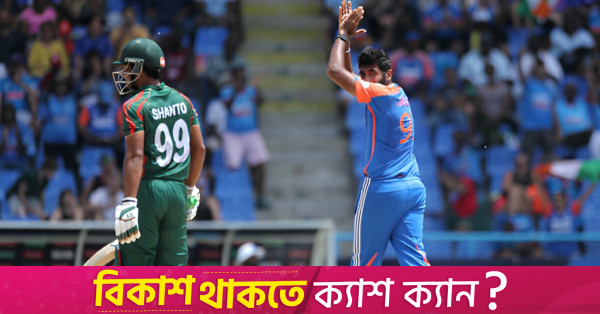‘Intent’ the buzzword for both Bangladesh and India, but in contrasting ways

In their 2022 T20 Asia Cup tie against Afghanistan, Bangladesh scored only 127 runs batting first and the total wasn’t enough against a spirited side. In that match, Bangladesh’s entire innings had only one six and the batters didn’t try many attacking shots.
After that match, Bangladesh team director Khaled Mahmud said batters with no intent didn’t have the right to play for the team.
S Sriram, who had just taken over as the technical consultant for the T20I side, also spoke extensively about the importance of “intent” and “impact” in the shortest format.
“If six or seven players can make an impact, Bangladesh can win. 25 or 30 off 17-18 balls is intent and impact for me [instead of big knocks]. A team with performers can lose matches but if we can make that impact, we can win more often than not,” he stated at one of the press conferences.
Sriram used the word “intent” so many times that at one point, social media commentators started mocking him and many prominent local media questioned his decisions.
But Sriram knew what he was doing and saying. There are only 120 balls in a T20 innings and if there are six frontline batters in a team, one gets 20 balls to make an impact if there is uniform distribution.
According to modern T20 experts, taking the game deep and playing the sheet anchor’s role are outdated concepts and there is hardly any option of taking time to settle down unlike in Tests and ODIs. Sriram, who also worked with Bangladesh in the 2023 Cricket World Cup, tried to instill that philosophy into the batters.
On Saturday, India finally found the perfect T20 template against Bangladesh. They scored 196-5 in 20 overs but none of the batters batted for more than 28 deliveries.
Every top-six batter hit at least one six and five of them had strike-rates of more than 140. Only Hardik Pandya scored a half-century but it came in quick time – just 27 balls.
“We are not used to an approach where batsmen throw it away after making 30’s 20’s, but it is about time we embrace an approach like this especially while batting first. Top intent from all the Indian batters so far,” wrote Indian cricketer Ravichandran Ashwin on X during their innings.
Sriram wanted Bangladesh to embrace this very template when he spoke about “six or seven impact players”.
Indian batters had been guilty of being too conservative on big stages but their captain Rohit Sharma said they would play like this from now.
“In T20, you don’t need that many 50s or 100s. You can put pressure on the opposition in other ways. And all our batters tried to do that from the start. That is how we want to play going forward,” Rohit said after the match.
On a good surface in North Sound, what Bangladesh needed to do was to take a leaf out of the Indian book and go hard early.
But their approach was baffling to say the least. There was hardly any element of fearless cricket when Bangladesh batted. Bangladesh required almost 10 runs an over at the start but all they managed after the powerplay was 42 for the loss of one wicket.
At that stage, they were well behind the run rate. But the situation didn’t improve after the powerplay as well. Bangladesh had eight wickets in hand but they were going at 6.6 runs per over at the halfway mark.
Bangladesh played 27 dot balls in the first ten overs and the damage done by the lack of intent was so irreversible that the required run rate had gone out of their hands when the contest entered the final phase of the game.
Opening the innings, Tanzid Hasan played a torturous knock of 29 off 31 but the most importantly, only 13 runs came off his 27 non-boundary balls.
Najmul Hossain Shanto, whose strike-rate was in the 140s at one stage, finished with a below-par strike-rate of 125, failing to maintain the tempo.
Bangladesh’s sedate approach meant they had as many as seven wickets in hand when the required rate touched the 15-run mark. On any surface, going at such a rate in a T20 match for a prolonged period of time is nearly impossible.
Bangladesh’s top-order (1-3) faced 73 off the 120 balls and scored 82 runs at a combined strike-rate of 112 when the required strike-rate was around 165. Two of them played more than 30 balls but the low strike-rate meant they left too much work for the middle and lower order to do.
India bowled well but it was Bangladesh’s approach that made the difference, feels former captain Tamim Iqbal.
“At no point Bangladesh looked like chasing a total of 197,” he told ESPNCricinfo. “I am not doubting Kuldeep Yadav’s [credentials] but I think the approach made his bowling look better.”
Shanto admitted that Bangladesh didn’t go as hard as they should have in the chase.
“We did not show as much intent as we needed with the bat, when we are chasing 190, we needed to show more intent especially in the first six,” Shanto said after the match.
Showing intent with the bat regardless of the situation is the way forward in T20 cricket. India, although belatedly, have embraced the philosophy and it’s time Bangladesh batters developed the skill and the mindset to do so.





